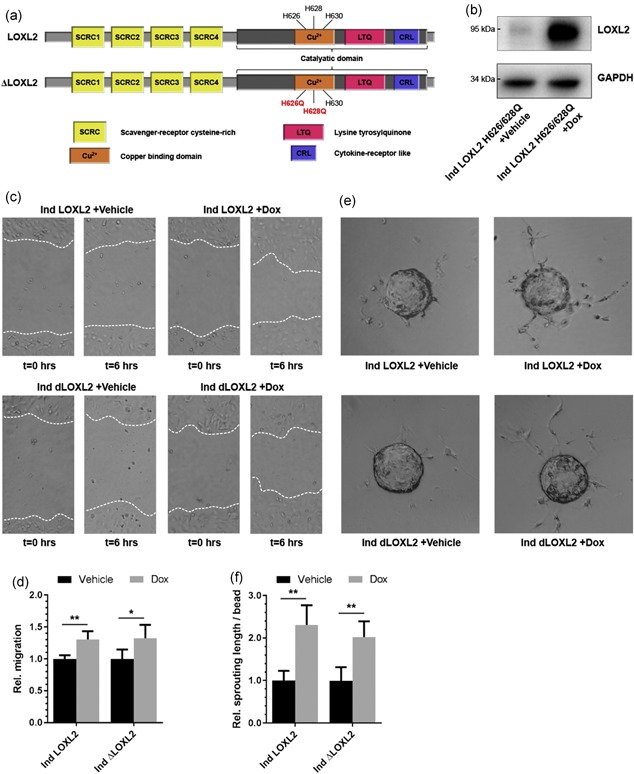Figure 3.

LOXL2‐induced increase in migration and sprouting is independent of enzymatic activity. (a) A schematic representation of LOXL2 (upper panel), and the catalytically inactive H26Q‐H628Q‐LOXL2 mutant (LOXL2 H626/628Q). (b) Western blot analysis demonstrating the inducible overexpression of an H26Q‐H628Q‐LOXL2 mutant in EC by stimulation with doxycycline (Dox) for 24 hr compared to PBS (Vehicle). (c) Representative pictures of a migration scratch assay when overexpressing wildtype LOXL2 (Ind LOXL2) and the H26Q‐H628Q‐LOXL2 mutant (Ind dLOXL2) in EC at t = 0 and t = 6 hr. (d) Overexpression of either wildtype LOXL2 or LOXL2 H626/628Q in EC results in comparable increased migration in scratch migration assays (n = 4 + SD, Student’s t test). (e) Representative pictures of an angiogenic sprouting assay in inducible wildtype LOXL2 or LOXL2 H626/628Q expressing EC stimulated with PBS (Vehicle) or doxycycline (Dox) at t = 72 hr. (f) Overexpression of either wildtype LOXL2 or LOXL2 H626/628Q in EC results in a comparable increase in sprouting length in angiogenic sprouting assays (n = 4 + SD, Student’s t test); *p < 0.05 and **p < 0.01. EC: endothelial cells; GAPDH: glyceraldehyde 3‐phosphate dehydrogenase; LOXL2: lysyl oxidase‐like 2; PBS: phosphate‐buffered saline [Color figure can be viewed at wileyonlinelibrary.com]
